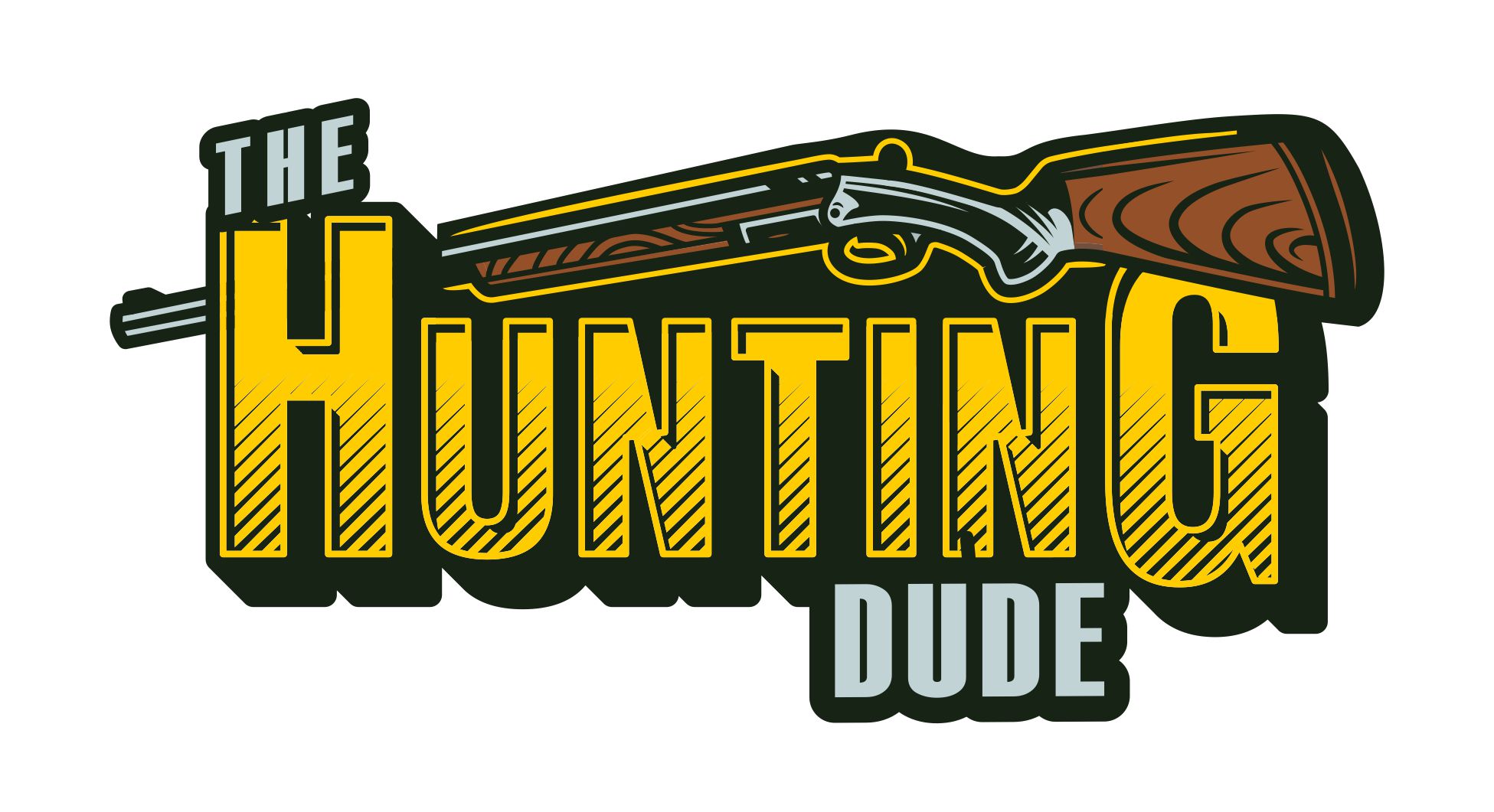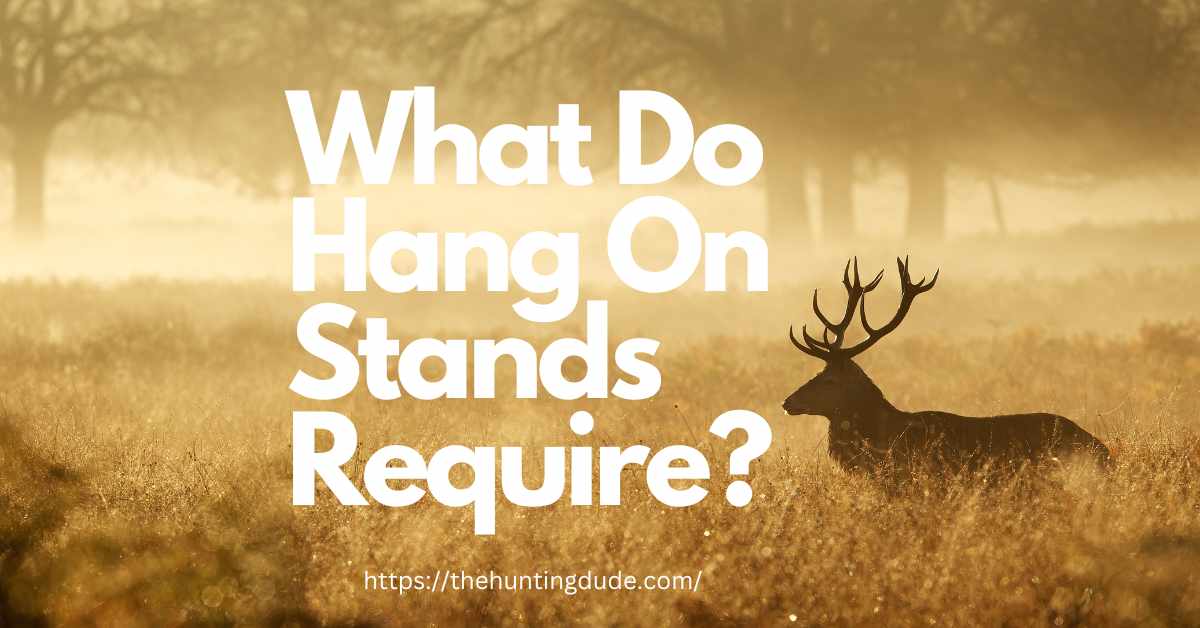Hang On Stands are portable treestands that are attached to the tree trunks for hunting purposes with the help of ropes, chains and belts.
Offering about four to five square feet of space, they are extremely comfortable treestands that provide hunters with an aerial view of the hunting ground and an improved line of sight.
In addition to this, they are more flexible and lighter in weight than ladder stands or climbing treestands as they do not include a ladder or climbing equipment.
Thus, for their portability, they appeal more to hunters who have to carry their treestands along with their hunting equipment while on a hunt.
However, unlike other treestands, hang on stands do require some extra equipment in order to set them up and ensure a safe and effective hunt.
They are first installed to an elevated position using climbing aids such as climbing sticks and are then securely strapped to the tree trunk. Once correctly set up, the hunter can sit on the hang-on stand with the help of climbing sticks.
This article will discuss all the features and equipment that a hang-on stand requires.
What Equipment Do Hang-On Stands Require?
As mentioned earlier, hang on stands are different from other treestands in the sense that they need to be set up properly on the tree trunk by being dragged upwards to the desired height of the tree. For this purpose, they require separate climbing aids such as climbing sticks, segmented ladders and ropes.
1. Climbing Sticks
Climbing sticks are required to set up a hang on treestand. After choosing a suitable tree and deciding on ideal height, use the climbing sticks to scale the tree to your desired height.
Start from the ground i.e. the foot of the tree and start moving upwards by placing climbing sticks one after another.
It is essential that you ensure that climbing sticks are properly attached before you place your weight on them and start climbing the tree.
Thus, climbing sticks play an integral role in helping you reach the desired tree height where you wish to set up your hang on stand.
On average four to five climbing sticks are required to achieve a good height for your hang on stand.
2. Segmented Ladders
An alternative to climbing sticks are segmented ladders. They are different from conventional ladders as they consist of unassembled ladder segments that can be assembled into straight ladders or free standing step ladders of your desired length within minutes.
As a result, they offer greater portability compared to conventional ladders and can be easily carried around during a hunt.
Just like climbing sticks, they are also used for the purpose of installing the hang on stand on an elevated position on the tree.
Once securely attached to the tree, the hunter will use the ladder to climb the tree and safely step into the hang on stand along with the other hunting equipment.
A conventional ladder can also be used for this purpose but this will negatively effect the portability and mobility of your hang on stand.
3. Safety Harness
Although hang on stands appeal more to hunters for their mobility and flexibility, they are extremely dangerous like all other treestands and can greatly put your life at risk.
This is due to the fact that an average hang on treestand is elevated up to a height of more 17 feet in the air.
As a result, the risk of taking a bad fall and suffering from fatal injuries is extremely high. Therefore, wearing a safety harness is essential while on a hunt on hang-on treestand.
Safety harness for hang on stands come in various shapes and sizes with each having their own unique characteristics. It is important that you choose a harness that is not only reliable but also suitable for your body weight and type.
The most versatile and durable safety harness available in the market is the Hunter Safety System Pro Series harness
4. Ropes
Hang-On stands also require ropes for proper set up. The ropes are used to pull the hang on stand upwards to the desired height for installation.
One end of the rope is tied to the hang on stand while the other is attached to the harness, enabling the user to easily pull the hang on stand to the correct height.
In a similar way, you can also pull up other heavy hunting equipment such as hunting weapons into the hang on stand once it has been securely attached to the tree.
5. Lineman’s Climbing Rope
Hang on stands also require the Lineman’s Climbing Rope for safety of the hunters. This rope is different from a normal rope as it has carabiner hooks on each end.
The rope is wrapped around the tree with each carabiner clipped to the sides of your harness. This provides hunters with extra protection and resistance in the case of a slip or a fall by ensuring a safe and a comfortable way to stay securely attached to the tree.
What Features to Look for in a Hang On Stand?
In addition to the extra equipment discussed above, there are also certain other features that should be included in a hang on stand for it be more efficient and reliable.
With the plethora of hang on stands available in the market, it is essential you choose the ones that are most suited to you and your needs.
Here are a few features that are a must in your hang on stand:
Comfortable Seat
The most important feature of every hang on stand is the level of comfort it offers. This is crucial because hunters spend hours in the hang on stand during hunting trips.
If you are not comfortable in your hang on stand, you will not be able to take an accurate aim at your target.
Therefore, always choose hang on stands that have comfortable seats with backrests, armrests and footrests.
In addition to this, padded cushioned seats also add to the comfort of your hang on stand and makes it possible for you to spend hours in the treestand without any discomfort.
Correct Size and Weight Capacity
Every year, a large number of hunting accidents occur as a result of the treestand breaking down. This happens when the treestand has a platform too small for you and all your hunting equipment or when it does not have the weight capacity to handle your weight and the weight of your equipment.
Thus, it is important that your hang on stand has a spacious platform with enough room and weight capacity for yourself and your hunting equipment.
Check all the weight ratings of your stand and compare it with your weight added together with the weight of your equipment before setting out for the hunt.
Portability
Hang On treestands require portability. Hunters spend hours in the hunting grounds looking for the most ideal spot to set up their stand while carrying their hunting equipment.
Carrying heavy load can result in discomfort and severe back pains. Therefore, you must choose a hang on stand that is lightweight, portable and easy to carry around.
Leveling Features
Hang On stands must also include leveling features, especially if you are climbing trees that are angled or curved. These features enable you to securely attach your hang on stand at dangerous angles without risking your safety.
Thus for your hang on stand to be versatile and handle trees of all shapes and sizes, it requires leveling features.
Safety Gear
Last but not the least, hang on stands must come equipped with all safety gear. Hanging from a tree at about 17-20 feet in the air is extremely dangerous.
Thus, your hang on stand needs to be reliable and satisfy all safety guidelines. This is a criterion where you do not want to take a risk as it can cost your life. Only purchase the hang on stand once you are satisfied with the customer reviews.
How to Set Up a Hang On Stand?
As we have discussed earlier, setting up a hang on stand is different compared to setting up a climbing treestand or a ladder treestand. Extra equipment is required for the installation of a hang on stand.
Here is a step by step guide about how to properly set up a hang on treestand using the equipment discussed above.
Before we start, always remember to read the instruction manual and safety instruction when you set out for your hunt.
Step 1: Choose a tree for your hang on stand
The first and foremost thing to do is choosing the perfect tree for hunting. The tree should be strong and sturdy enough to bear the weight of the hang on stand and also provide sufficient cover which is crucial in order to avoid being spotted by your prey.
In addition to this avoid trees with branches as they can restrict the up and down movement of your stand.
Step 2: Determine your hunting route
This step involves deciding on your target height and the direction in which you want to set up your hang on stand.
Step 3: Use your climbing aides
Once you have determined your target height, attach your climbing aides to the tree and use them to scale the tree. If you are using a segmented ladder, assemble it to a length that is sufficient enough to use your desired height.
However, if you are using climbing sticks then start placing them a foot off the ground to get a good start. Make sure they are securely positioned to prevent movement while you climb.
Step 4: Rope your stand
Measure a rope to your target height where you want to place the hang on stand. Tie one end of the rope to your stand and one to your harness. The rope will be used to pull your stand up to the desired height.
Step 5: Secure yourself with the lineman’s rope and start climbing
Wrap around the lineman’s rope around the tree with the carabiners clipped to your harness. This will provide you with extra protection against a fall.
Once the rope has been securely wrapped around, start climbing. Remember to also move the lineman’s rope with you as you climb up.
If you are using climbing sticks, keep on placing more sticks as you move up till you reach your desired height.
Step 6: Pull up the stand
Once you have safely reached your desired tree height, carefully pull up your hang on stand using the rope you had tied in Step 4. Avoid hitting the tree with your stand while you pull it.
Step 7: Attach the Hang On stand to the tree
After the hang on stand has safely reached the target tree height, place it against the tree and tightly wrap the straps around the tree trunk.
Make sure to lock the stand in place before folding down the platform and stepping into your stand.
Before beginning your hunt, check all your safety gear and straps.
Conclusion
Unlike other treestands, hang on stands are much more flexible and mobile as they do not come with attached ladder segments. However, this does mean that to set them up hunters require extra climbing equipment such as the climbing sticks or segmented ladder, and ropes.
In addition to this, like all other treestands, hang on stands also require safety harness and other safety gear to ensure a safe hunting trip.
Apart from the necessary equipment, you must also look for certain other features in your hang on stand to ensure good functionality and efficiency. These include a spacious platform, comfortable seats, portability and leveling features.

